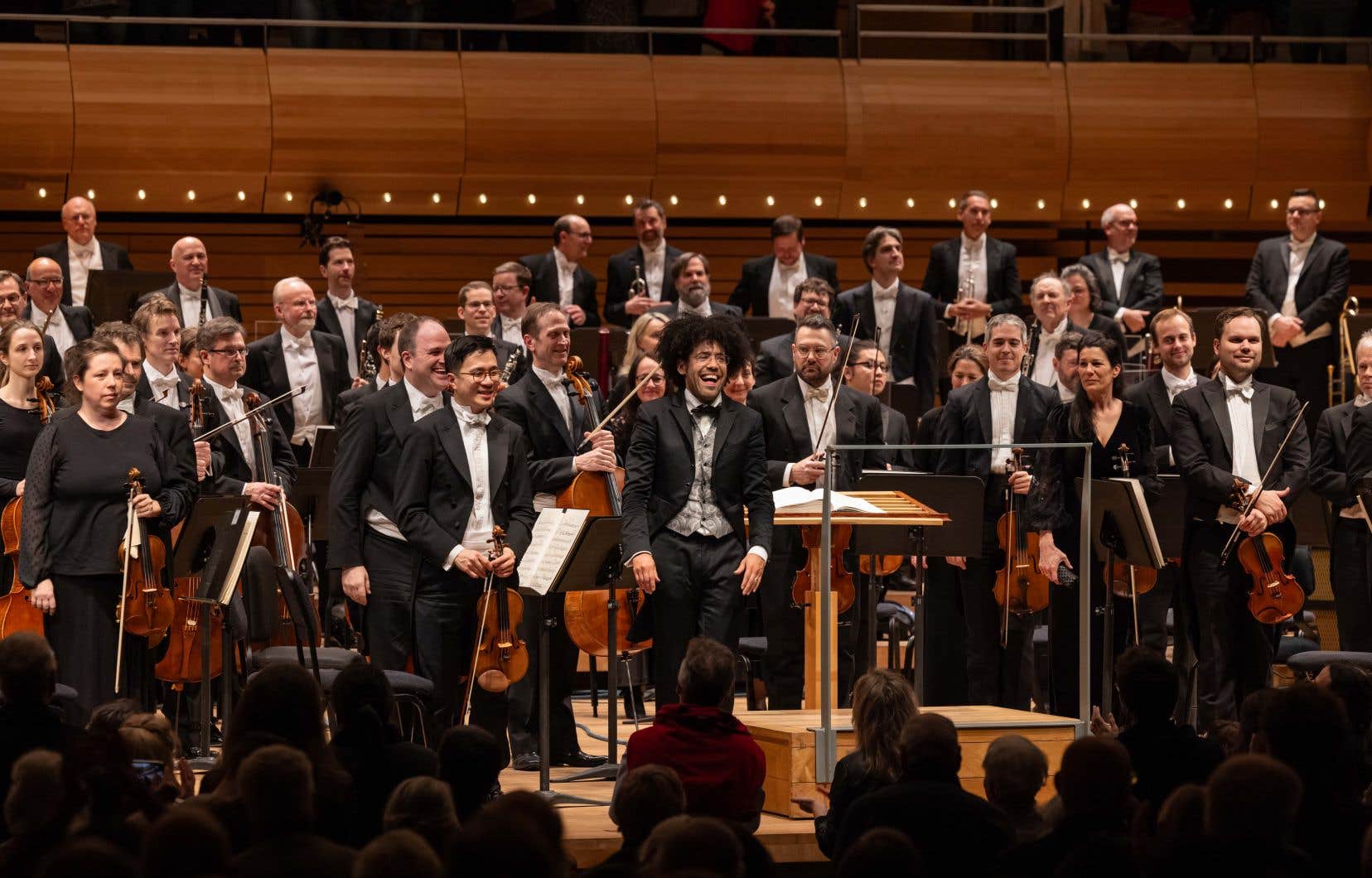Raphael Payare performed Tuesday evening a highly anticipated 7e Symphony by Mahler for the evening chosen to mark the start of the commemorations of the 90e anniversary of the Montreal Symphony Orchestra. The concert received a triumphant reception, and even if we understand the legitimate enthusiasm, it nonetheless raises some questions.
Despite the reservations that we are going to make, there is not the least reason to worry after the first reading of the 7e Symphony by Mahler by the OSM and Rafael Payare, Tuesday evening. After all, the first Fifth, in Lanaudière, was quite far from what we heard afterwards, after a tour in Korea, and from the maturation, on record and at Carnegie Hall.
It is also quite ungrateful to criticize such a concert or a performance by Rafael Payare, in general, because his performances are so enthusiastic and of great musical generosity that one necessarily seems ungrateful. But let us still try to reason and analyze what we have heard.
A trilogy
For some leaders, 5e6e And 7e Symphonies by Mahler form a trilogy of death, hell and fear. We believe, after Tuesday’s experience, that Rafael Payare is one of those leaders. The musical director consciously chose to approach the Seventh before the Sixtheven more complex and, above all, darker because without regression or remission.
The question is what individual color to give to each symphony, even if we integrate them into this sort of trilogy which does not bear its name. This question, Rafael Payare does not yet resolve it in our opinion for the Seventhand in particular for its keystone, the 1er movement. This remains too impregnated with the militaristic tension of the Fifth embodied by the trumpets.
There is in the middle of the 1er movement of the 7e Symphony kinds of openings, clearings towards an impossible paradise, which Mahler closes, but which must be allowed to be glimpsed. They have a particular color, an atmosphere. It is also symptomatic that conductor and orchestra completely missed the most magical moment of the 1er shutter, the large central clarification, noted “ sehr breit ” (very large). In fact Rafael Payare wants to maintain a continuous tension and, as a result, in these incessant changes of tempos, it is very difficult for the orchestra to know on which foot to dance.
That said, not only are there two other concerts remaining and, moreover, once (probably next season) the Sixth will have served as catharsis, the Seventh and its color dualities will fall into place more easily.
Very good points
Because there are already, subsequently, very beautiful things in the 7e of the OSM and Payare, starting with the “ Nightmusik I » whose progress is clear with a magnificent personification of the timbres. The instruments look like characters swarming in a soundtrack: that’s exactly it. And there, for once, the pulp of the strings is just right. On the other hand, you will have to think about finding cow bells that are a little less ugly for the Sixth. These are dry and caricatured.
For the ” Schattenhaft » (ghostly, shadowy), nothing to complain about either: the movement flows at the right tempo. We can make it a little scarier, but it’s almost there. On the other hand, the “ Nightmusik II » is surprising in its speed. We do not perceive the more intimate, reduced, loving character of the serenade. It’s still Payare’s desire not to bog down anything, but which gives this part a zest of stress or unnecessary haste.
As to Final, he found an ideal interpreter in Payare. In this strange movement, which resembles a musical fair, the cursive attitude in the idea “let’s get it over with” has always been a winning bet. This Final has often been criticized. But how could Mahler do otherwise? A Final luminous in a symphony of darkness had to be a caricature. By giving it wings, edges and quick turnarounds, Payare and his orchestra aroused legitimate enthusiasm from the spectators. At this point, basically, the curious 1er part, between hallali and shambles, was very far away…
The OSM musicians deserve much credit for preserving such energy and cohesion until so late in the evening. Because once again, after the 2e Concerto of Bartók prelude to the 5e Symphony of Mahler, or to the association of Glagolitic mass of Janáček with the Rite of Spring of Stravinsky at the same concert, Rafael Payare once again proved that the sense of measure is really not his primary quality. While 7e Symphony of Mahler is sufficient in itself (both for the orchestra and for the spectators’ ability to concentrate), he added a sumptuous first part: the complex 1er Violin Concerto by Szymanowski.
This admirable score is distinguished by magnificent dreamlike flights of the violin. The worst enemy of this work is a violinist with rough or shrill high notes, because the chanterelle (high string) is very much in demand. Simone Lamsma is an excellent choice of soloist for the purity of her intonation, the beauty and sweetness of her sound. Lamsma and Payare played the complementarity perfectly: on the soloist (mostly), the purest finesse, and on the conductor, the depth of an often very rich orchestration, particularly in the conclusion of the work.
The experience was admirable and the coupling wise for enduring music lovers.
